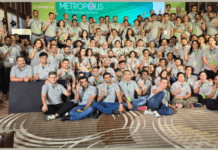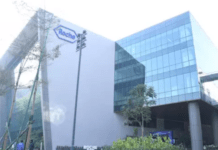Organisations need to measure long-term success by analysing short-term failures. ROI should be based on accountability and should not be lost by the arithmetics of it.
Time and again CEOs have argued on the importance of investing in HR, and measuring its ROI and impact on business results. It becomes increasingly important now because technology has enabled HR to strengthen talent management, engagement and performance, to help drive better business outcomes. With that, experts still believe technology is a mere enabler, and where leaders need to focus most is, the value of people. Hence, this discussion around measuring ROI in HR. Senior leaders from the power sector recently came together to ponder on the same at the 6th Power HR Round Table organised by UPES.

Talking about what ROI means for long-term success, Rajeev Bhadauria, director-group HR, Jindal Steel & Power, said, “Technology cannot replace human resource. We need to measure HR in the right context. Human resources need to create disruptions with far-reaching consequences. We need exploratory mindsets, and hence, success also cannot be measured by past events. Organisations need to measure long-term success by analysing short-term failures. ROI should be based on accountability and should not be lost by the arithmetics of it.”
No doubt, talent management and its impact on business results has been the most reliable metric for looking at ROI in HR. Hence, it is crucial for HR to develop talent strategies that are aligned to the business objectives. “When we hire, we look for functional experts, cross-functional collaborators, technology integrators and people, who are resilient. With that kind of talent in place, ROI can be extremely high,” said Vipul Tuli, CEO and country head Sembcorp Industries.

It’s not just about ensuring and measuring ROI. Organisations first need to realise and accept that people are its biggest asset, and what they do with that asset is their responsibility, especially the CEO’s. Vijay Rai, MD, Asia Pacific & EMEA Markets, Saviour US INC, emphasises on the same as he says, “I believe that human capital will be an appreciable asset and how the tangibility of HR to business translates into efficiency and desired business results is the responsibility of the CEO too.”
With that, the experts present at the roundtable unanimously agreed that people are important to any business, and also discussed the significance of measurement of ROI, and of investing in people practices. Praveen Purang, member-advisory board, Jindal Steel and Power also said, “ROI to HR is extremely important, because if you can’t measure something, you cannot improve on it. Having said that, we need to actively invest in human resources more than anything else.”

The experts agreed that measuring ROI is crucial, as even HR is a vital part of the business. In fact, if HR aims to be a part of the corporate strategic journey, keeping track of the ROI is a must, be it tangible or intangible.In line with that, Sanjeev Kumar, vice president -HR, MBPPL said, “ROI is God for us. Behavioural changes in terms of intervention should be used to determine the ROI. This is because, in a business, people yield losses not companies. HR should be the key in differentiating one organisation from the other.”However, the old metrics are passé in the face of the new millennials, and HR will now have to rethink and adapt to new tools and metrics to measure ROI.
Although organisations have been arguing on the most credible metrics for measuring ROI on human capital, there is still no singular aspect. Most organisations consider engagement level, reduced attrition and better business results as the performance metric for measuring ROI on human capital and people practices. All said and done, senior executives across organisations still agree that there is definitely a need for some new tools and interventions to measure the return on HR capital, which is extremely crucial to business.
Value our content... contribute towards our growth. Even a small contribution a month would be of great help for us.
Since eight years, we have been serving the industry through daily news and stories. Our content is free for all and we plan to keep it that way.
Support HRKatha. Pay Here (All it takes is a minute)





































There are three types of managers-a)Those who create problems and send them up. they keep their bosses always at tenterhooks. b) Those who create problems, solve them and take the credit. Their bosses are happy and silent. c) those who anticipate problems, take suitable measures for prevention and are happy that they are real trouble shooters. Their bosses watch. Category a) comes into focus very soon and goes out of focus very soon. Category b) comes into focus late and also goes out of focus late. Category c) takes time to come into focus but once into focus, never goes out of focus. Its this category which is a real asset in ROI in human capital.
Very right. Technology can not change Human resourse. First employer need to understand that the employees are asset of the organisation and we need to nurture their talent.
The thoughts are apt.